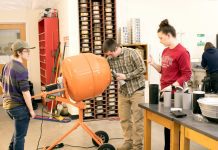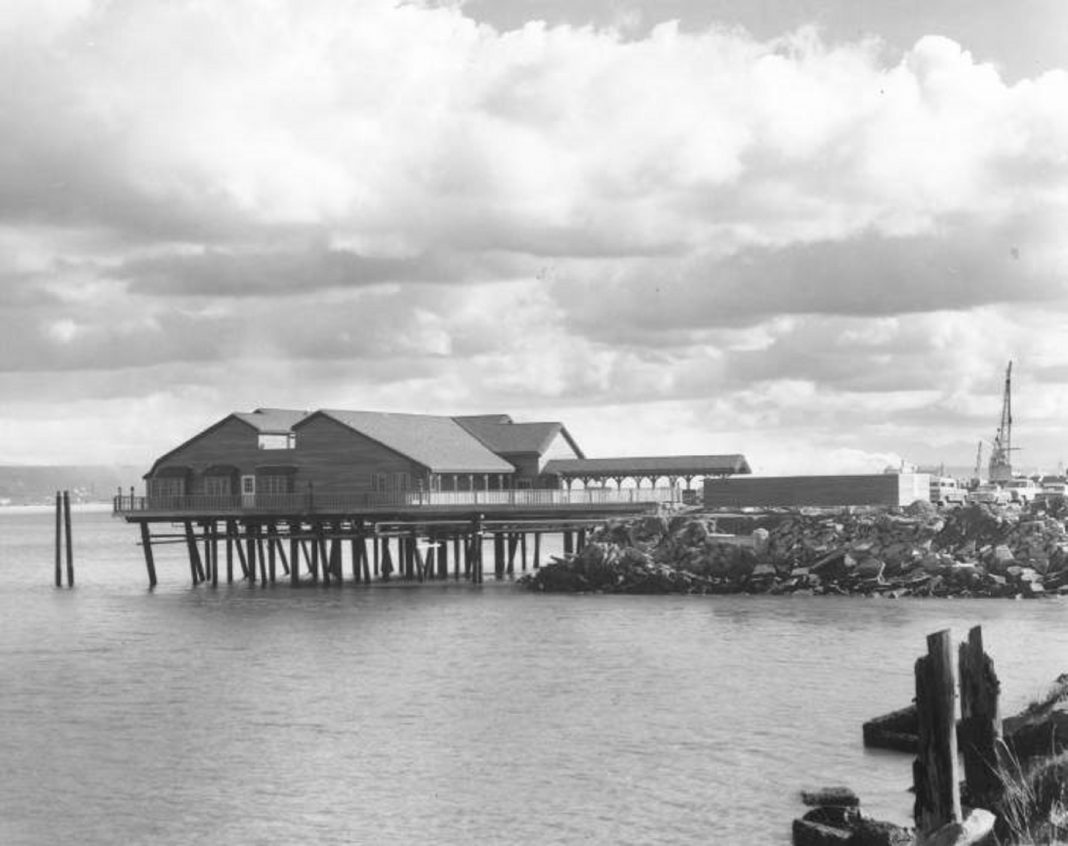Food, often more than landmarks or museums, tells the story of a community, city or country. No guidebook about Paris would avoid sections about where to eat. Try talking to a resident of Chicago about the glories of New York-style pizza without getting into a debate.
Such is the case with the Tacoma area. Restaurants come and go, but some tell the story of the time and place where they simmered sauces and cooked meats long after they have disappeared from business directories.
Pierce County has a long roster of eateries that carved their niches and left their marks in the memories of their former customers. That list continues here with five more strolls down our collective and gastronomic history.
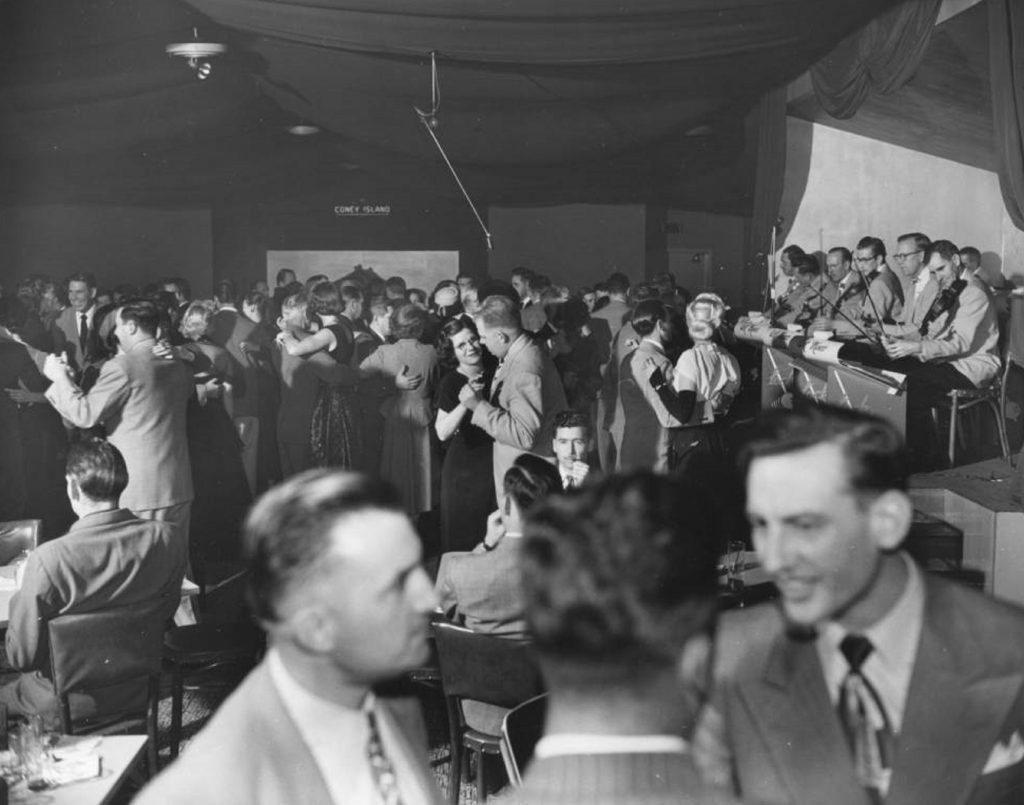
The New Yorker
The year was 1946. World War II was over. Soldiers were returning from far-flung regions of the world and returning to civilian life after experiencing cultures, music and people along their travels. Some sought the flavor of the “big city” when they returned to Tacoma. They found it at The New Yorker, a 750-person dining and dance hall that brought East Coast music and menus to West Coast audiences, complete with dedicated to the islands of Coney, Long, Staten and Manhattan rooms. The Sixth Avenue café and night spot was THE PLACE for jazz back in its early days, with performances by pianist and composer Oscar Peterson, known as the “Maharaja of the keyboard,” and the Artillio “Art” Mineo Orchestra, which was the house band of the New Yorker’s Coney Island Room. Later years would see bands of that up-and-coming sound of rock and roll with shows by the Ventures in the 1960s and Adrian in the 1970s. In a vignette about the sign of the times, the venue was also drawn into a lawsuit in 1968, when a woman sued the hotspot for the right to sit at the bar.
The venue changed names and niches over the years, first becoming the Backstage Restaurant and then the Falstaf Dinner Theater in the late 1970s. The walls are much less dramatic these days. The location was converted in the early 1980s into what is now the Jarvie Memorial Family Lodge of the Salvation Army, where families receive short-term housing and connections to social service programs to lift them from homelessness.
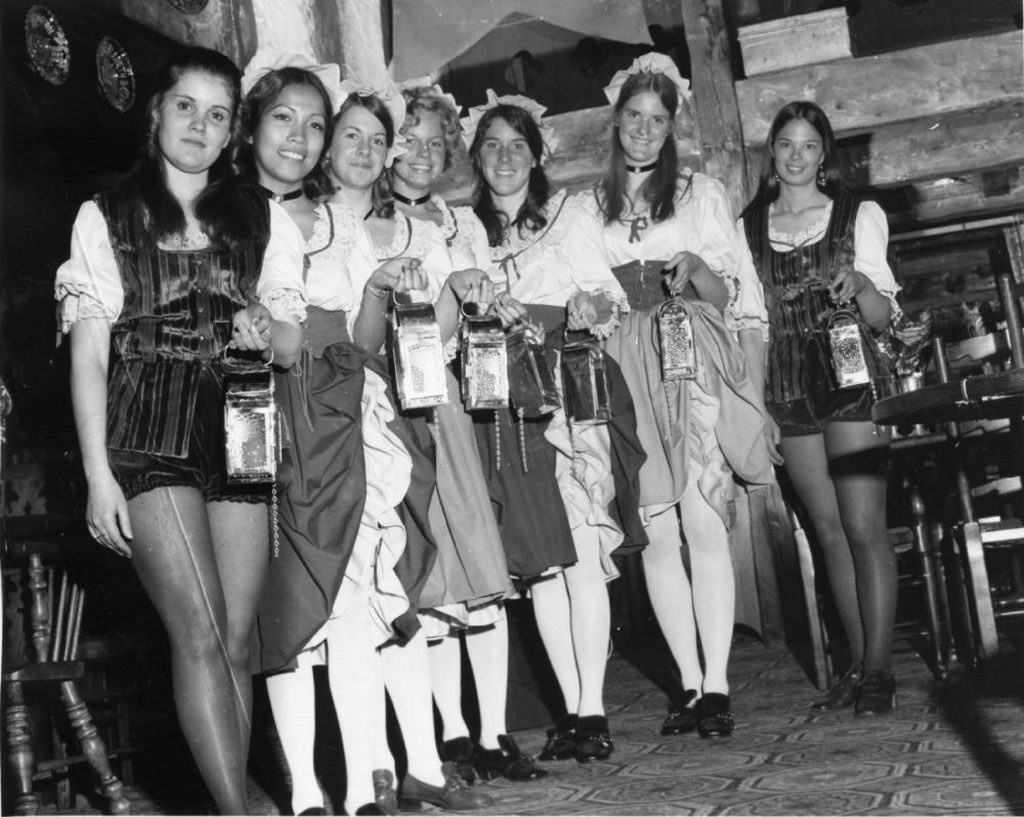
Clinkerdagger, Bickerstaff & Pett’s Public House
The local winner for the most unusually awesome eatery name clearly went to Clinkerdagger, Bickerstaff & Pett’s Public House, which opened at 3327 Ruston Way in March of 1972. The pub-style restaurant was a waterfront fixture, not only because of its views of Commencement Bay and famed fish and chips but also because of its Victorian décor, complete with heavy wooden tables and Ye Old England uniforms. It was sort of the spoof British version of Steve’s Gay 90s, which focused on an Old West theme. Female wait staffers wore ruffled skirts and blouses with white stockings, while the male servers donned white hose, buckled shoes and ruffled shirts. Many of the workers were selected from the nearby University of Puget Sound campus, so the family atmosphere came almost automatically since most of the employees already knew each other from their college classes.
The massive fireplace served as the focal point for dinners and drinks as windows provided sunset views of the working waterfront outside. The restaurant changed hands several times and became Duke’s Chowder House in 2006.
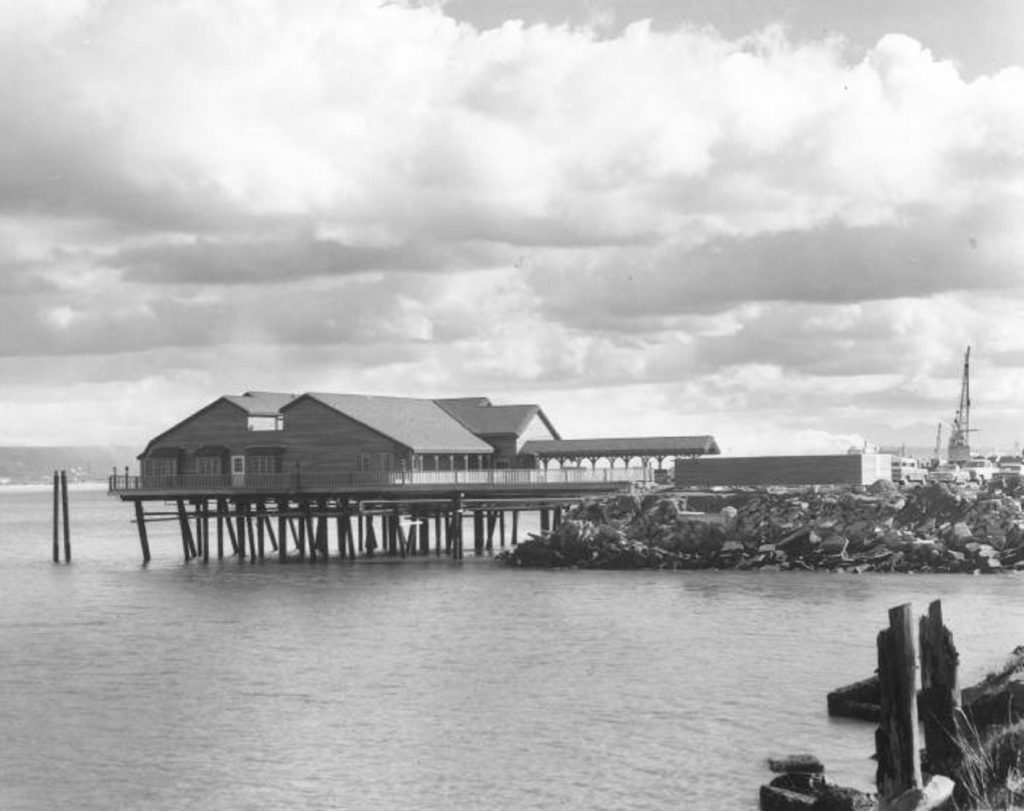
Sambo’s
While not a locally owned restaurant, Sambo’s restaurants had locations around the state, including Tacoma, Lakewood and Puyallup, that still spark memories and discussions well after they closed.
The controversially named casual-dining restaurant that specialized in pancakes started in Santa Barbara in 1957 and franchised along the West Coast during the 1960s before booming to 1,100 locations nationwide at its peak. However, as the number of locations grew, so did the controversy of its name, a reference to “The Story of Little Black Sambo,” an 1899 children’s book by Helen Bannerman that gave rise to “pickaninny” caricatures of African-American children.
Lawsuits over the name, criminal charges over its company practices, corporate mismanagement and a failed rebranding effort finally doomed the franchises with a corporate bankruptcy filing in 1982. The Tacoma location, at 7826 South Tacoma Way, is now a used car lot. The Lakewood location, 10005 Lakewood Drive S.W., is now an IHOP restaurant, while the Puyallup eatery, at 105 Ninth Ave. S.W., is now Cattin’s Family Restaurant, just outside of the Washington State Fairgrounds.
Some individual franchisees bought their locations and either changed names or carried on the racist monikered into the 21st Century. The last Sambo’s restaurants, which was also among the first location, changed names in 2020. It’s now called Chad’s.
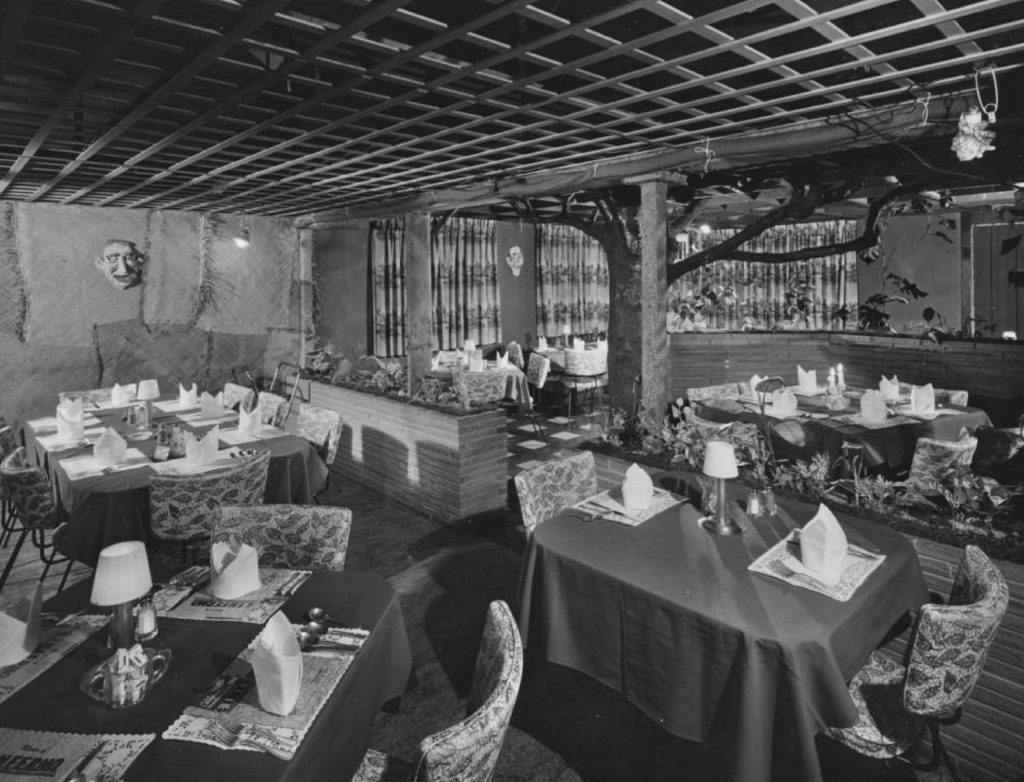
The Inferno
Long before the burger flippers at Wendy’s used the term “where’s the beef?” there was a local restaurant that specialized in charbroiled beef and chicken. The Inferno Charcoal Broiler Restaurant, located at 7430 Pacific Ave., opened in 1956, with roaring neon “flames” on its signage. The interior offered a sense of the outdoors, with potted, albeit plastic, plants, patterned floral chairs and burlap sacks draping the walls.
The single-story building had started as Luppino’s Restaurant with James Luppino as the head sauce stirrer in 1947. That restaurant operated for about a decade before changing its name to the Inferno, which became the place for steaks in the bustling neighborhood. The restaurant has long since closed, with the address now serving pizzas as a Papa John’s restaurant.
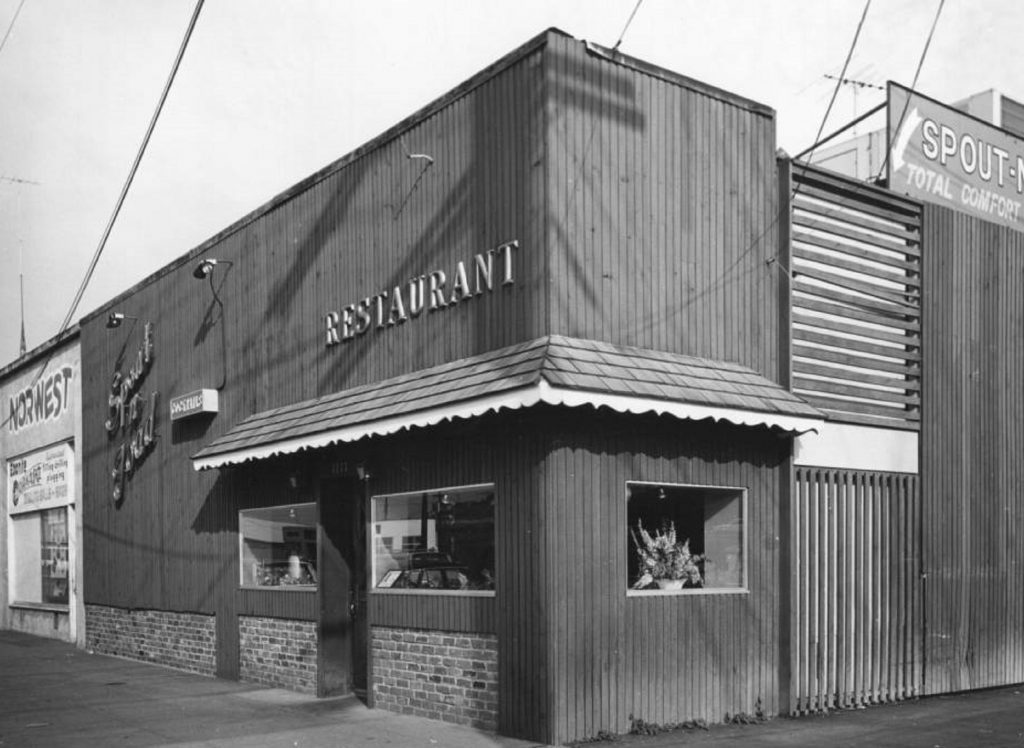
Spout N Toad Restaurant
The last, oft-mentioned eateries of our local restaurant history is Spout N Toad, which operated at 1111 Center St. from 1966 to 1997. Robert Davidson came up with the oddly named eatery as a reference to his former business, the Blue Note Tavern that operated down the street. It had a centerpiece of a cement frog statue that spit water from its mouth into a small fountain. Davidson and his wife Ethel ran with the concept and named the bar area The Swamp Room. The neighborhood watering hole was well known to workers of the Nalley Valley and operated for 30 years until Davidson finally wanted to retire. The site is now Center Collision.
Do you have a favorite restaurant of yesteryear in Pierce County? Send us an email at submit@southsoundtalk and let us know!








